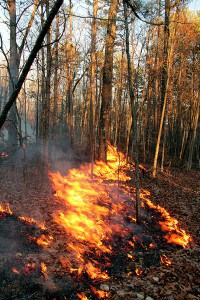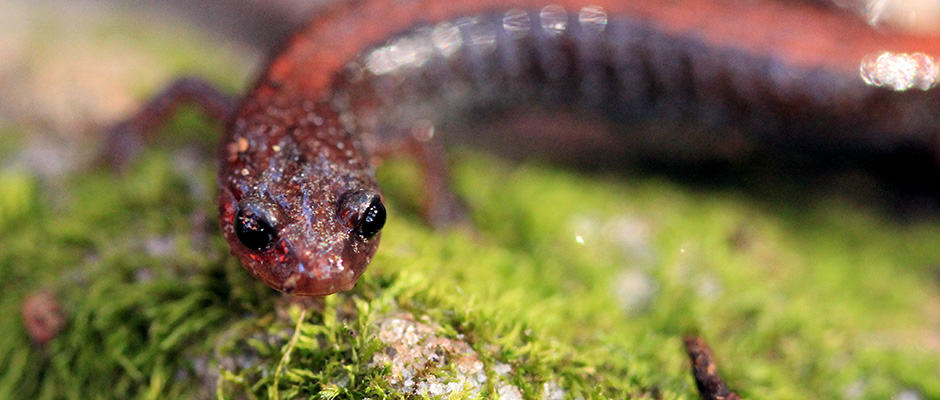Share this article
Salamanders Change Habitat Use With Prescribed Fires
Some salamanders may change the way they use habitat as trees are burned, thinned out or restored to historical oak savanna conditions, according to a new study.
“There’s really not much out there on how it affects amphibians,” said Katie O’Donnell, a wildlife biologist with the United States Geological Survey and lead author of the study that was recently published in the Journal of Wildlife Management.
As part of the study — commissioned by the U.S. Forest Service — O’Donnell along with other researchers examined the impact of prescribed fires on southern redback salamanders (Plethodon serratus) in the Sinkin Experimental Forest, an area of the Mark Twain National Forest in Missouri that’s set aside for large-scale studies. The team conducted the study over four and a half years, essentially taking nine sampling seasons from each spring and fall in those years. In each area they looked at the areas before they modified them and for several years after.
There were four kinds of ecosystems they looked at — freshly burned areas, areas that had been cleared from oaks and other big shelter trees, areas in which herbicide had been used to kill small or medium trees while leaving the largest ones intact, and areas that hadn’t been burned or cleared.

A prescribed fire burns salamander habitat in an experimental area of Mark Twain National Forest. A new study examined some of the ways in which salamanders respond to habitat change in an effort to see how restoring historic oak savanna habitats will affect them.
Image Credit: Katie O’Donnell
“The biggest result of our study is that we saw differences in captures,” or the number of salamanders in a given area, O’Donnell said. “The captures decreased in all three treatments relative to the untreated areas.”
They found that salamander numbers they detected in the areas that were partially cleared or burned decreased, though removing the medium and small trees didn’t have as much of an impact when they used statistics to control for undetected amphibians.
“In terms of true abundance, we saw a slight decline in the mid-story right away, but a rebound two years after the treatment,” O’Donnell said. “We may not have seen much of the effect of the prescribed fire but there could be a lag time in terms of seeing an effect on the population level.”
In the burn areas, the researchers found that the leaf litter that salamanders spend most of their time buried under dropped a lot, affecting the way the amphibians used their habitat. The leaf litter on the ground rebounded after a year, but O’Donnell said it didn’t have the same quality of decomposition as before burning. “It didn’t retain moisture as well,” she said, and the team didn’t find as many salamanders in the leaf litter as frequently. Instead, they tended to shelter under large cover objects like rocks or logs.
The researchers also found that the treatment that had the most impact on salamanders was in the areas in which they cleared the oaks and bigger trees.
“It lets a lot of sunlight in to dry areas out more quickly,” O’Donnell said.
According to O’Donnell, while some of their findings were based on numbers they actually detected, it’s difficult to tell if populations in those areas are dropping or whether the animals are just changing the way they use those habitats.
The study is important though as it could tell how salamander would fare as historical oak savanna habitat is restored in some areas, partly because researchers don’t know the number of salamanders that lived in the area at that time.
“If the goal is to restore more historical conditions, it’s hard for us to say exactly how that’s going to affect the salamanders.”
She said more long-term studies are needed to determine some of these effects, and whether the changed habitat use impacts salamander reproduction and other things.
Header Image:
1. A new study on southern redback salamanders in Missouri shows that the amphibians change their habitat use after prescribed fires or forest clearing.
Image Credit: Katie O’Donnell








